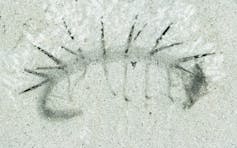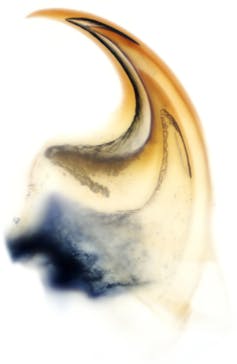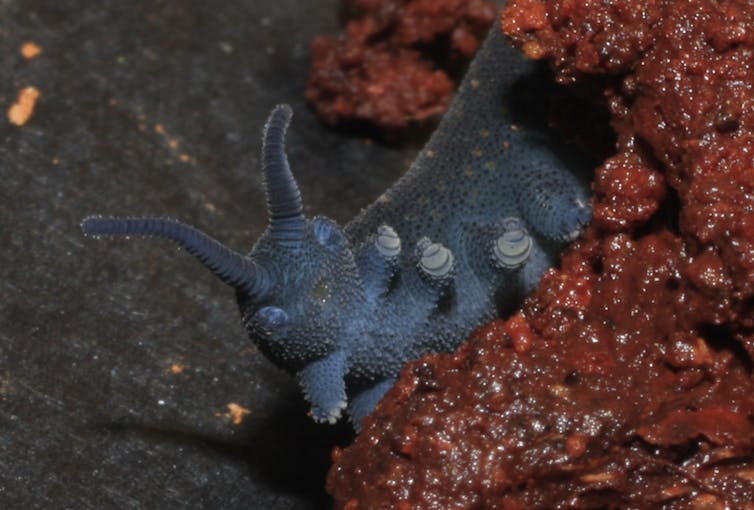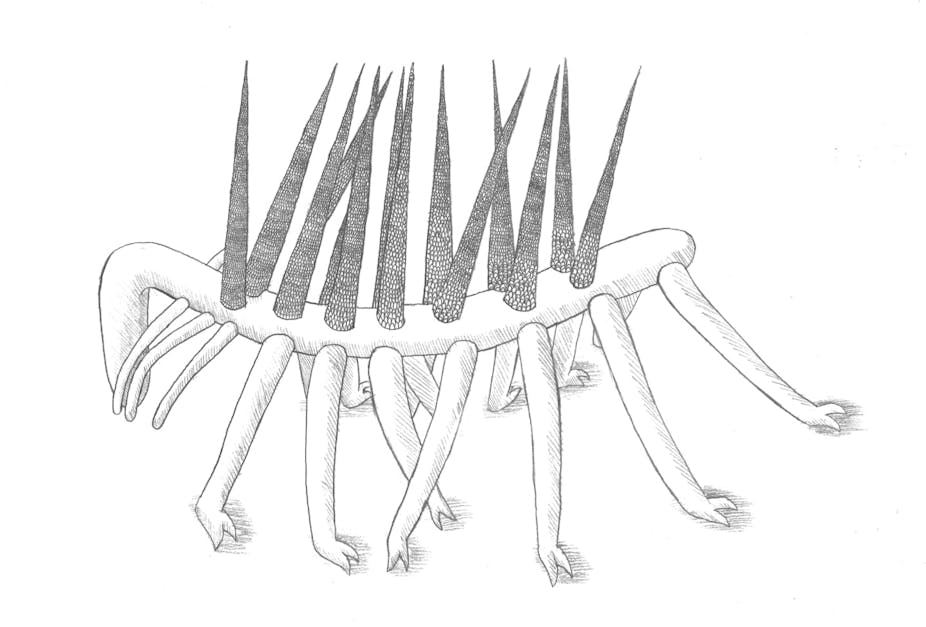A bizarre 500-million-year-old “worm with legs” has finally found its rightful place on the evolutionary tree of life. Fossils of Hallucigenia look so odd that scientists couldn’t make head or tail of it, quite literally. With its alien-looking legs and intimidating spines, it was thought to represent a long-extinct body form. But, for the first time, a new study we published today in Nature links Hallucigenia to a modern group of animals – the rainforest-dwelling velvet worms.
A palaeontological puzzle

Hallucigenia has posed a challenge for palaeontologists. It is difficult to classify because it shares few features with modern animals. When it was first described in the 1970s, the spines along its back were mistaken for legs, and even today scientists have yet to agree which end is its head and which is its tail.
Vexed by this mystery, I used state-of-the-art electron microscopes to examine centimetre-long Hallucigenia fossils from the Burgess Shale in Yoho National Park, Canada. The movement of the Earth’s crust thrust this treasure trove of fossils to the top of the Canadian Rockies, but it was laid down on a sea floor long before even the simplest plants had emerged onto land.
When magnified 1,000 times, the fossils revealed that Hallucigenia‘s claws had multiple layers, stacked one inside the other like a conical onion. This prompted me to take a closer look at modern velvet worms, to which Hallucigenia had been tentatively linked.

Careful microscopy showed that that these worms have the same onion-like layers in their claws. And each time the animals moult, the outer sheath falls away to expose a fresh layer beneath.
To test whether this connection denoted a biological relationship, I enlisted the help of my colleague Javier Ortega-Hernández. Together, we scoured the scientific literature for fossil worms from the same group as Hallucigenia – the lobopodians. We then searched for family trees that were consistent with our data on living and fossil creatures.
Our optimal tree shows that velvet worms are indeed distant relatives of Hallucigenia, separated by half a billion years of evolution. But other lobopodians belong elsewhere. Some fall among the ancestors of arthropods, the group that includes millipedes, insects, spiders and crabs. Others are related to tiny moss-dwelling animals called tardigrades or water bears.
From dead end to lay-by
It is often thought that modern animal groups, such as arthropods, arose fully formed in a sudden burst of biodiversity called the Cambrian Explosion, about 540 million years ago. But Hallucigenia’s new position on the tree of life closes the gaps between these modern groups, and shows that Cambrian evolution proceeded in small increments rather than great leaps.
Modern velvet worms are tropical predators adapted to life among logs and leaf litter. They have glands to squirt sticky slime at insect prey, have modified their forelimbs into fearsome jaws, and are covered with tiny whiskers that feel their way through cracks in logs.

Hallucigenia did not have such glands, jaws or whiskers, which would after all be of little use under the sea. But because it did have onion-layer claws, Hallucigenia was not an evolutionary dead end. Rather, it represents an early pit stop on the way to the velvet worm body plan, which arose gradually over time.
Other lobopodians turn out to have equivalent relationships to arthropods and water bears, showing some but not all of the features that define these modern groups. So we no longer need to view Hallucigenia and other lobopodians as evolutionary oddballs. Rather, they represent deep branches in the tree of life, and provide a unique insight into the origins of modern animal diversity. After all, without the fossils, who would have guessed that the cuddly velvet worms evolved from an ancestor as ghoulish as Hallucigenia?

